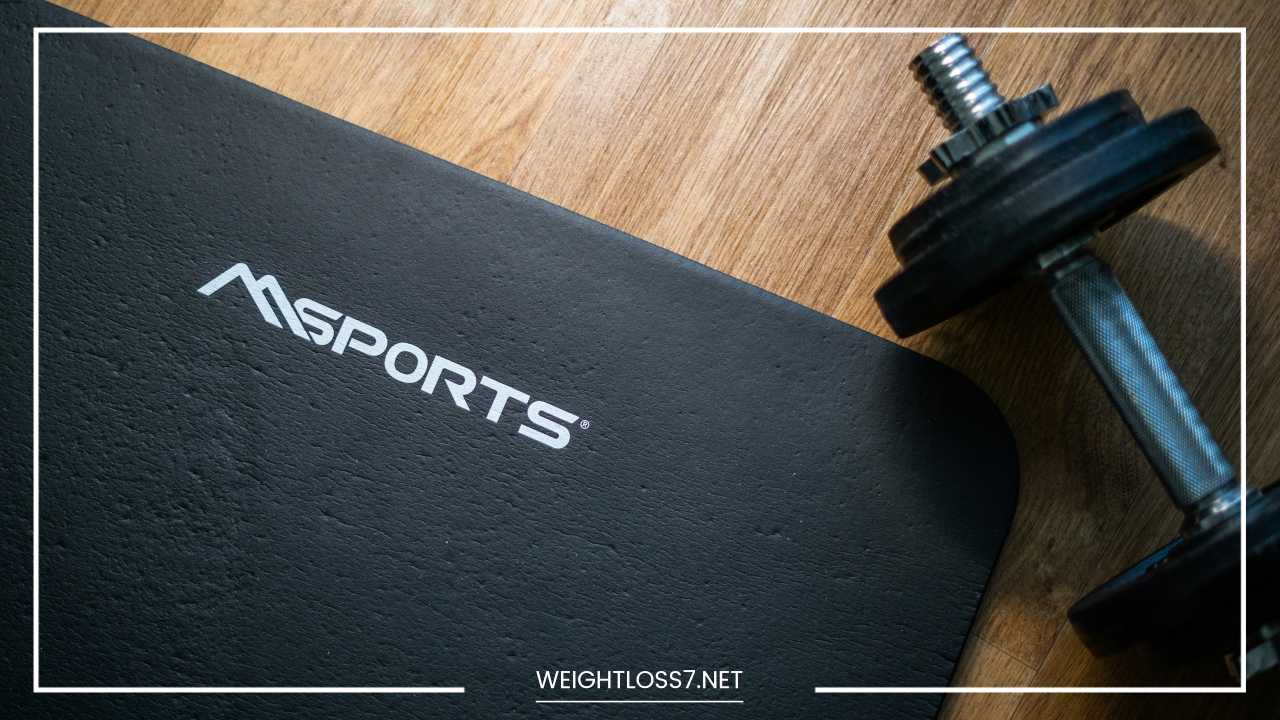Home Gym Guide: Build Your Perfect Workout Space

Home Gym
Your Own Sweat Sanctuary: The Ultimate Guide to Building a Home Gym
Let’s face it, the gym can be intimidating. Crowds, unfamiliar equipment, and the pressure to perform can leave even the most committed fitness newbie feeling out of place. But what if you could ditch the commute, ditch the crowds, and get a fantastic workout in the comfort and privacy of your own home?
Enter the home gym – your personal haven for sculpting your physique and boosting your health.
This guide will be your roadmap to building a home gym that perfectly fits your needs and budget. We’ll cover everything from the essential equipment to creating a motivating workout space, ensuring you have all the tools and inspiration to reach your fitness goals.
Why Choose a Home Gym?
The benefits of a home gym are numerous. Here are just a few reasons why creating your own sweat sanctuary might be the perfect choice for you:
- Convenience is King: No more scrambling to fit gym time into your busy schedule. With a home gym, a quick workout is just a step away, making it easier to stay consistent with your fitness routine.
- Goodbye Gym Intimidation: Feeling self-conscious at the gym? A home gym eliminates that anxiety, allowing you to focus solely on your workout.
- Save Time and Money: Ditch the gym membership fees and the time spent commuting. In the long run, a home gym can be a cost-effective investment in your health.
- Personalized Workouts: Tailor your workouts to your specific goals and preferences. No need to wait for equipment or adjust your routine around a class schedule.
Building Your Home Gym: A Step-by-Step Guide
1. Assess Your Space and Budget:
Before diving headfirst into equipment shopping, take a realistic look at the space you have available and your budget. A spare room, garage, or even a dedicated corner in your living room can be transformed into a functional home gym.
Once you’ve identified your space, determine your budget. Home gyms can range from a minimalist setup with bodyweight exercises to a fully equipped haven. The key is to prioritize equipment that aligns with your fitness goals.
2. Essential Equipment:
Here’s a breakdown of some essential equipment to consider for your home gym, categorized by budget:
Beginner-Friendly (Under $200):
- Exercise Mat: A versatile mat provides a comfortable surface for bodyweight exercises, yoga, and stretching.
- Resistance Bands: These lightweight yet effective bands offer a wide range of exercises for building strength and improving flexibility.
- Jump Rope: A fantastic cardio tool that’s inexpensive and requires minimal space.
- Free Weights (Dumbbells or Kettlebells): Choose a weight that challenges you for 10-12 repetitions. You can gradually increase the weight as you get stronger.
Mid-Range (Under $500):
- Pull-up Bar: If you have the space, a pull-up bar is a valuable addition for building upper body strength. Doorframe pull-up bars are a space-saving option.
- Medicine Ball: A medicine ball adds variety to your workouts, engaging your core and improving coordination.
- Adjustable Bench: An adjustable bench allows you to perform a wider range of exercises with free weights, targeting different muscle groups.
Advanced (Above $500):
- Weight Bench and Barbell: This combination allows for a more comprehensive weight training program, targeting major muscle groups.
- Power Rack or Squat Rack: Provides a safe and stable platform for squats, bench presses, and other barbell exercises.
- Cardio Equipment: Consider a stationary bike, treadmill, or rowing machine for effective cardio workouts at home.
Remember: This is just a starting point. You can always add more equipment later as your fitness level progresses.
3. Create a Motivating Environment:
Your home gym should be a space that inspires you to work out. Here are some tips for creating a motivating environment:
- Lighting: Bright and energizing lighting can make a big difference.
- Flooring: Invest in rubber mats to protect your floor and provide cushioning for exercises.
- Mirrors: Mirrors can help you check your form and create a sense of spaciousness.
- Music: Create a playlist with upbeat and motivational music to get you pumped for your workout.
- Visual Inspiration: Surround yourself with fitness quotes, workout posters, or pictures of your fitness goals to stay motivated.
4. Finding the Perfect Workout Routine:
With a home gym, you have the freedom to choose your workout program. There are countless free and paid resources available online, including workout apps, YouTube channels, and fitness blogs.
Here are some additional tips for finding the perfect workout routine:
- Define Your Goals: Are you looking to build muscle, lose weight, improve cardiovascular health, or gain flexibility? Knowing your goals will help you choose a program that’s right for you.
- Consider Your Fitness Level: Choose a program that matches your current fitness level. You don’t want to jump into a program that’s too advanced and risk injury.
- Variety is Key: Don’t get stuck in a rut! Alternate between bodyweight exercises, weight training, cardio, and flexibility work to keep your workouts interesting and prevent plateaus.
- Listen to Your Body: Don’t push yourself too hard, especially when starting. Take rest days and incorporate low-impact activities like stretching or yoga to allow your body to recover.
- Consult a Professional: If you have any medical conditions or are unsure how to use equipment safely, consider consulting a certified personal trainer. They can create a personalized workout program and teach you proper form to maximize your results and minimize injury risk.
5. Safety First:
Safety is paramount in any workout environment, but it’s even more important in a home gym where you might not have a spotter readily available. Here are some safety tips to keep in mind:
- Learn Proper Form: Before attempting any exercise with weights or equipment, learn proper form to avoid injuries. Utilize online resources, consult a personal trainer, or find instructional videos for proper technique.
- Start Light: Always start with lighter weights than you think you can handle. You can gradually increase the weight as you get stronger.
- Control the Weight: Don’t jerk or swing the weights. Always lift and lower them with controlled movements.
- Warm Up and Cool Down: Always begin your workout with a 5-10 minute dynamic warm-up to prepare your body for exercise. Cool down with static stretches to improve flexibility and prevent muscle soreness.
- Know Your Limits: Don’t be afraid to take breaks when needed. Listen to your body and avoid pushing yourself to the point of exhaustion or pain.
- Invest in Safety Gear: Consider using weightlifting gloves for better grip and wrist wraps for added support during exercises.
Adding the “Wow” Factor to Your Home Gym (Optional):
While not essential, there are a few ways to elevate your home gym experience and add a touch of luxury:
- Smart Equipment: Explore smart exercise bikes, treadmills, or mirrors that connect to fitness apps, offering interactive workouts and personalized feedback.
- High-Quality Flooring: Invest in shock-absorbing gym flooring for a comfortable and safe workout experience.
- Sound System: Install a good sound system to blast your workout playlist and create an immersive experience.
- Air Purifier: Improve air quality, especially if your gym space lacks proper ventilation.
- Smart Lighting: Install smart lighting that can be adjusted to create different moods depending on your workout routine.
Beyond the Equipment: Building a Fitness Mindset
Building a home gym is a fantastic investment in your health, but remember, it’s the effort you put in that truly yields results. Here are some tips for cultivating a strong fitness mindset:
- Set SMART Goals: Set Specific, Measurable, Achievable, Relevant, and Time-Bound goals. This will help you stay motivated and track your progress.
- Find a Workout Buddy: Partner up with a friend or family member who shares your fitness goals. Having someone to hold you accountable can be incredibly motivating.
- Track Your Progress: Keeping a workout log or using a fitness app allows you to track your progress and celebrate your achievements.
- Reward Yourself: Reward yourself for reaching milestones to stay motivated and acknowledge your efforts. It could be a new piece of workout equipment, a healthy indulgence, or a relaxing massage.
- Focus on the Positive: Instead of focusing on what you can’t do, focus on how far you’ve come. Celebrate your improvements, no matter how small they may seem.
Home Gym Inspiration: Beyond the Basics
Having covered the essential elements of building a home gym, let’s delve deeper into some inspiring ideas to personalize your workout space and maximize its functionality.
Space Optimization:
- Folding Equipment: Invest in equipment that folds and stores easily, maximizing space in smaller areas. Foldable benches, yoga mats, and exercise bikes can be tucked away when not in use.
- Wall-Mounted Solutions: Utilize your walls! Install mounted pull-up bars, weight racks, and shelves to store equipment and free up floor space.
- Multifunctional Equipment: Opt for equipment that serves multiple purposes. Adjustable dumbbells can replace a whole set of fixed weights, and suspension trainers like TRX straps offer a variety of exercises.
- Mirrors and Lighting: Strategically placed mirrors can create an illusion of a bigger space, while good lighting keeps you motivated and allows you to check your form during exercises.
Adding a Personal Touch:
- Decorate with Inspiration: Surround yourself with motivational quotes, inspirational pictures, or fitness posters.
- Bring in Nature: Plants can add a touch of life and improve air quality in your gym space.
- Create a Theme: Consider a theme that inspires you, like a minimalist zen vibe, a beachy paradise, or a high-tech futuristic setup.
- Tech Integration: Consider integrating a smart TV or tablet to display workout videos, track your progress, or connect to fitness apps.
Home Gym Flooring:
The right flooring can make all the difference in your home gym. Here are some factors to consider:
- Impact Absorption: Choose flooring that absorbs shock to protect your joints and prevent damage to your subfloor. Rubber mats or puzzle mats are popular options.
- Durability: Opt for durable flooring that can withstand the wear and tear of weightlifting and cardio exercises.
- Noise Reduction: Consider noise-reducing flooring, especially if your gym is located in a basement or apartment.
- Ease of Cleaning: Choose flooring that’s easy to clean and maintain, particularly if you sweat heavily during your workouts.
Smart Storage Solutions:
- Open Shelving: Open shelves keep your equipment readily accessible and add a visual element to your gym space.
- Storage Ottomans: Ottomans with storage compartments can double as seating and offer a place to store towels, workout gear, or lighter equipment.
- Pegboards: Pegboards mounted on the wall provide a space to hang resistance bands, jump ropes, yoga straps, and other accessories.
- Rolling Storage Carts: Rolling storage carts offer a mobile and versatile solution for storing weights, dumbbells, kettlebells, or medicine balls.
Taking Your Workouts Outdoors:
If space is limited or you simply enjoy the fresh air, consider incorporating outdoor workouts into your routine. Here’s how:
- Portable Equipment: Invest in portable resistance bands, jump ropes, or a TRX system that you can easily take outdoors for a change of scenery.
- Bodyweight Exercises: Parks, playgrounds, or even your backyard provide a perfect setting for bodyweight exercises like push-ups, squats, lunges, and dips.
- Running/Walking Tracks: Make use of local walking or running tracks for your cardio workouts.
- Fitness Apps with Outdoor Workouts: Many fitness apps offer workout routines specifically designed for outdoor environments, providing variety and motivation.
Remember, your home gym is a reflection of you. By incorporating these tips and suggestions, you can create a space that is not only functional but also inspiring, motivating you to reach your fitness goals and unlock your full fitness potential.

















